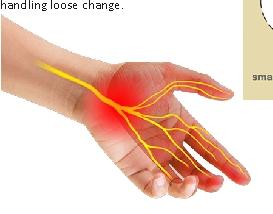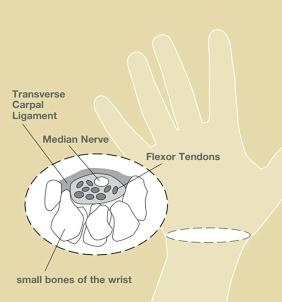
11 minute read
WOODLAND CONSERVATION & BIRDS
The Importance of Woodland Conservation to our Birds

Advertisement
by Dr. Jonathan Wilson, Haverford College Department of Environmental Studies, Philip Witmer, Vice President Bird Town PA
Township trees, both at individual scale and in larger woodlands, enhance our environment in many ways, from landscape shade in the summer to absorbing carbon dioxide through photosynthesis. Many articles have focused on the importance of preserving our woodlands and tree canopy because of their vital role in reducing flooding and stormwater runoff and in sequestering greenhouse gases and moderating climate extremes. 70% of the woodlands in Pennsylvania and the overwhelming majority of woodlands in your Township are on private property, and their conservation is crucial for these, and other, environmental reasons. One of the less-appreciated roles that our trees play is habitat; they are home to a diverse range of animals, including birds. Many bird species have experienced a steep population decline in recent decades, up to 60%, or greater, in the last 50 years. Therefore, in addition to the many other roles they play in your Township as part of our natural landscape and stormwater management “green infrastructure”, preserving Township woodlands is important to stemming the further loss of birds.

Local habitat conservation can play a vital role in supporting diverse and abundant bird populations. Although deforestation of tropical forests in overwintering sites is a factor largely beyond our control, research has shown that forest-dwelling tropical migrant birds (vireos, warblers, tanagers, thrushes, and flycatchers) that visit our area in the summer, have declined much more sharply in areas of forest fragmentation than in areas of continuous forest. This decline is because forest fragments and smaller, less connected woodland areas have more “edge” per unit area, which allows for increased predation and parasitism. For example, more frequent cowbird parasitism of bird nests and increased predation of eggs occur because nests and eggs are not protected by a larger woodland buffer Although some birds have evolved responses to these challenges (robins and cardinals recognize and remove cowbird eggs from their nests), many birds have not. Therefore, the more fragmentation and reduction of our local woodlands takes place, the greater the loss of birds, and we have already observed populations in decline in our area. For example, the Cornell Lab of Ornithology has recorded a 34% decline in wood thrush, frequently heard in the woodlands of the Trout Creek watershed, 34% from 2007-2021 in the western Pennsylvania suburbs, with other songbirds such as orioles, chickadees, and tanagers recording similar losses. This ongoing loss of birds has cascading effects on our local ecosystems and gardens. For example, each individual songbird consumes up to a thousand caterpillars a day (Leslie Jones Sauer, Once and Future Forest). With fewer birds, our environment loses an important form of insect predation control.
Reducing the number and density of trees in our wooded areas also has negative effects on the environment and bird populations in other ways. First, the close proximity of woodland trees to each other acts as a stabilizing influence on soils and trees, allowing trees to intertwine their roots to support each other during storms. According to Doug Tallamy (The Nature of Oaks), thinning out trees in a woodland does not protect them, but rather decreases their resiliency from winds during storms, increasing tree fall and further loss of habitat. Second, clearing of trees and disturbance of the forest floor leaf litter increases the spreading of invasive plant and animal species, which thrive on sunlight and disturbed soil. Many of these woodland invaders are now supplanting natural regeneration of forests and hindering regrowth of native shrubs and wildflowers, which play an essential role in supporting our birds and other wildlife.
There is much that we can do to preserve these interconnected populations of birds and trees in our area. Property owners who are fortunate enough to have woodlands or woodland borders on their land can help preserve our bird population through action and vigilance, including the following:
...reducing the amount of any woodland disturbance on their properties; keeping woodland patches intact and connected, wherever possible.
...directing arborists to leave the dead snags of trees to provide habitat for woodpeckers and other birds.
...avoiding compaction of tree roots from heavy equipment and mowing.
...promptly pruning any broken branches on trees.
...leaving woodland floor leaf litter wherever possible; and,
...where tree removal is necessary, replanting canopy trees with shade tree species native to our woodlands and protecting volunteer seedlings from deer browse.
Any or all of these actions will contribute to greater forest health and stronger bird populations in our area.
HEALTH & WELLNESS
Everything you always wanted to know about home colorectal cancer tests but were afraid to ask!
Colorectal cancer is almost entirely preventable with a colorectal cancer screening. The American Cancer Society recommends that adults begin colorectal cancer screening at age 45. Your doctor may recommend beginning screening earlier if you're at increased risk for colorectal cancer based on factors such as your personal and family history of colorectal cancer or colon polyps that can become cancer
Several screening tests can be used to find polyps or colorectal cancer
While the gold standard is colonoscopy, home-based screenings are also an option for some people at average risk. If you're hesitant about having a colonoscopy, a home-based test is better than no test at all. It's important to talk to your doctor about which test is right for you and how often you should be screened. A positive result on a home colorectal cancer test will be followed up with colonoscopy. So, what do you need to know about at-home tests? Read on for answers to the most frequently asked questions.
What home colorectal cancer test options are available?
Home stool-based tests look for signs of cancer in a person's stool. There are three types of tests:
A guaiac fecal occult blood test (gFOBT) checks for hidden blood in the stool with a chemical called guaiac.
A fecal immunochemical test (FIT) uses antibodies to check for hidden blood in the stool.
A FIT-DNA stool test (e.g., Cologuard®) combines the FIT with a test that checks DNA in stool cells for genetic changes that may be a sign of colorectal cancer.
How accurate are these home colorectal cancer tests?
FIT tests are generally more accurate than gFOBT tests, and FIT-DNA tests are the most accurate, at around 92%. Still, all can produce false-negative results, meaning they do not detect cancer when it's there, or false-positive results, meaning they detect cancer when none is there. Any positive result will be followed up with a colonoscopy.
How do you collect a sample?
With a gFOBT test, you receive a test kit from your health care provider. At home, you use a stick or brush to obtain a small amount of stool, which you place on a special card and return to a doctor or laboratory for testing. You'll have some dietary restrictions and will collect stool samples for three consecutive days.
With a FIT test, you receive a test kit from your health care provider. At home, you use a stick or brush to obtain a small amount of stool, which is placed in a special collection tube or on special cards and returned to a doctor or laboratory for testing. There are no dietary restrictions, and you'll need only one sample.
With a FIT-DNA test, you receive a test kit from your health care provider. At home, you collect an entire bowel movement and send it to a lab, where it's checked for altered DNA and for the presence of blood. There are no dietary restrictions, and you'll need only one sample.
How often should you do a home test? FIT and gFOBT tests should be repeated every year. FIT-DNA tests should be repeated every three years.
Comparatively, a colonoscopy screening can be every 10 years or more frequently depending on what is found and the patient's risk factors.
What are the benefits and drawbacks of home tests?
Stool-based screenings require people to collect samples directly from their feces, which may be unpleasant for some, but the test is quick and noninvasive and can be done at home, and no bowel preparation is needed. Stool-based testing is most beneficial when done over time.
Stool-based tests are not as accurate as colonoscopy, and any positive results on stool-based screening tests require follow- up with colonoscopy. While there are many types of colorectal cancer screening tests, colonoscopy is the only test that can find precancerous polyps and remove them before they become cancerous.
Do I need a prescription from my doctor? Yes, you will need a prescription from your primary care provider or gastroenterologist for any at-home test. Colonoscopies are performed by a gastroenterologist or colorectal surgeon.

Is colorectal cancer screening covered by insurance?
All colorectal cancer screening is generally covered by insurance at regular intervals, but it's best to check with your insurance provider to be sure.
Main Line Health Cancer Care provides compassionate care through all stages of cancer treatment, from diagnosis through survivorship, for patients throughout the Philadelphia region and beyond. To discuss colorectal cancer screening options or to schedule an appointment with a Main Line Health colorectal or gastroenterology specialist, call 1.866.CALL.MLH (225.5654)



PET HEALTH & WELL-BEING
Could my pet possibly have allergies?
Karen Farver, DVM, DACVD
Does your pet look like this?
chance of a drug eruption. It is important that you do not let your pet ingest the topicals.
Food allergy is not as common as environmental allergy as a cause of foot licking but can be present if the symptoms have always been non seasonal. This is especially true in younger or older patients or patients that also are showing GI signs. In these cases, talk to your veterinarian about a strict food trial with a novel protein diet or hydrolyzed diet trial or considering a novel protein home cook diet balanced for complete nutrition to assess if this causes resolution of symptoms.
What happens if these treatments do not work?
It is a similar test to the skin test a human allergist performs for human allergies. This will test the local allergic reaction in the skin to the pollen. This is the preferred test typically due to the benefits of testing the physiologic reaction of the skin. However, this is a sedated test.
Paw licking is a frequent symptom of allergies in both dogs and cats!


What could it mean if my pet licks their paws?
Paw licking can be a symptom of many things including:
Airborne allergies
Food allergies
Bacterial infection
Yeast infection
Mites (sarcoptes or demodex)
Autoimmune disease
Nailbed problems, etc.
What can I use at home to treat paw licking?
It may be helpful to wipe your pet's paws once to twice daily with baby wipes or an over-the-counter chlorhexidine product or chlorhexidine/azole product. — or a bacterial infection, you may try applying over the counter Neosporin* to the paws twice daily with no licking after application.
For a yeast infection, you may try applying over the counter miconazole cream* or spray to the paws.
These can be combined with an overthe-counter hydrocortisone cream once daily for 7 days. *For all topicalsespecially steroids — it is important to stop if the skin worsens and contact your veterinarian. With all topicals there is a
If these treatments do not work, it may be that your pet is suffering from allergies or has a more severe infection. In either of these cases, a trip to the dermatologist may indicated to diagnose and treat the problem.
How would a veterinary dermatologist treat allergies in my pet?
For environmental allergies, first, we would need to test your pet to identify which allergens he or she is reacting to. There are two different tests that are commonly used to identify these allergens: intradermal skin testing (IDAT) and IgE blood testing. There are advantages and disadvantages to both tests and sometimes your dermatologist will recommend both tests to maximize results. Factors veterinary dermatologists consider in selecting the test include the condition of the skin, the overall health of the pet, the ability to withdraw certain medications, the age of the pet, how long the pet has had allergies, the species of the pet and the overall accuracy of the test.
Intradermal skin testing (IDAT) is typically only offered by a veterinary dermatologist or allergist. This test is typically considered the “gold standard” of allergy testing.
Serum allergy testing is a blood test that measures the levels of IgE antibodies in the pet's blood. These antibodies are produced by the immune system in response to allergens in some pets. The main disadvantages of this allergy test are many companies offer this assay, these companies will all perform the test differently which can result in varying accuracy between labs. There is also concern that some pets have not developed circulating IgE in the blood to allergens that are causing their itch and inflammation. This test can be helpful when there are respiratory signs of allergy or if a pet's health is a concern for sedation.
Dermatologist never recommend in-home allergy test kits. There is no evidence to support the claims that hair and saliva tests for dog allergies are accurate. The results of studies evaluating at home testing showed that it was no better than guessing and that the results were not consistent.
What happens after allergy testing?
Based on the results of the testing, a vaccine will be formulated that is specifically tailored to your pet! The goal of the vaccine is to gradually lessen their reactions to the allergens. This allows many pets to discontinue oral and topical medications that they have needed to control their allergies.



What is carpal tunnel syndrome?
Carpal tunnel syndrome is a common condition that causes pain, numbness, and tingling in the hand and arm. The condition occurs when one of the major nerves to the handthe median nerve is squeezed or compressed as it travels through the wrist.
In addition to numbness and tingling, carpal tunnel syndrome can cause swelling, weakness, and night time pain. Patients sometimes describe dropping things unexpectedly and may have difficulty with buttoning shirts, tying shoelaces, or handling loose change.
What causes carpal tunnel syndrome?
Carpal tunnel syndrome is frequently seen in individuals who develop swelling or inflammation in their hands. People who smoke, as well as those with connective tissue diseases, diabetes mellitus, and hypothyroidism, may be at greater risk. Repetitive work activities can also cause carpal tunnel syndrome.
The median nerve acts as an electrical wire between the spinal cord and the hand. The nerve passes through the carpal tunnel in the wrist along with nine tendons that bend the fingers. When the tendons in the wrist become swollen and inflamed, the median nerve can become compressed by the transverse carpal ligament (see figure), leading to carpal tunnel symptoms.


Early on, symptoms commonly occur during sleeping hours. In more advanced cases, the symptoms can become problematic during waking hours. Many sufferers describe symptoms with benign activities, like reading the newspaper or driving a car.
What can a hand surgeon do to help?
A hand surgeon can order special nerve tests to verify the extent of the problem. Custom wrist splints are helpful for early stages of carpal tunnel syndrome. These splints are worn at nighttime to relieve pressure on the median nerve and to prevent the wrists from bending during sleep.

Cortisone injections often provide excellent relief from symptoms. Unfortunately, symptomatic relief is only temporary, and most people experience a recurrence of symptoms after 3-4 months.
For chronic or more advanced cases, carpal tunnel surgery is often recommended as the best course of treatment.
What can I expect from surgery? Surgery provides more space for the median nerve and relieves pressure on the median nerve and tendons. This procedure is typically done under light sedation and local anesthesia and usually takes only minutes to complete.
While there are several different approaches to performing carpal tunnel surgery, usually a 1/2 inch incision is made near the wrist and use of a camera to release the tunnel under direct visualization. This minimally invasive approach minimizes discomfort following surgery and allows patients to return to activities more quickly. Over 95 percent of patients improve dramatically following surgical intervention, with most returning to daily activities within days. Many patients can resume heavier job-related activities after 2-4 weeks. Contact
14 Offices in Pennsylvania & New Jersey including:
King of Prussia · Havertown
Paoli · Langhorne · Limerick
Center City Philadelphia
South Philadelphia
Willow Grove · Lansdale
Rockledge · Glen Mills
Cape May Court House
Cherry Hill
Hammonton







